- Home
- Bobby Akart
New Madrid Earthquake
New Madrid Earthquake Read online
NEW MADRID
Bobby Akart
Thank You
Thank you for downloading NEW MADRID, a novel by Author Bobby Akart.
Praise for Author Bobby Akart and New Madrid
“New Madrid is a perfect melding of a fictional story taking on a real-world persona. Akart’s works make you stop and think, not if this could happen but when will this happen.”
~ Brian Alderman
“Every time I thought the book was going to let me take a breath and relax, it took me right into another life or death punch to the throat. Bobby Akart is the King of Disaster Thrillers!”
~ Colt Payne
“Action, adventure, excitement and heart. This book has it all.”
~ Carol Dyer
“As with any of the best novels, this book really captures your attention and makes it hard to put down at the end of the day.”
~ Cody McDonell
“New Madrid is not your run-of-the-mill disaster thriller!”
~ Karl Hughey
“Bobby Akart again shows his flair for realistic scenarios, in-depth research and edge of your seat, hold your breath suspense. Definitely one of his best yet!”
~ Leslie Bryant
“If you weren’t already familiar with the New Madrid Seismic Zone, you will be when you’re done with this book; and you’ll have a whole new level of respect, and possibly fear, for Mother Nature.”
~ Melonie Kennedy
NEW MADRID
Bobby Akart
Other Works by Amazon Charts Top 25 Author Bobby Akart
New Madrid (a disaster thriller)
Odessa (a Gunner Fox trilogy)
Odessa Reborn
Odessa Rising
Odessa Strikes
The Virus Hunters
Virus Hunters I
Virus Hunters II
Virus Hunters III
The Geostorm Series
The Shift
The Pulse
The Collapse
The Flood
The Tempest
The Pioneers
The Asteroid Series (A Gunner Fox trilogy)
Discovery
Diversion
Destruction
The Doomsday Series
Apocalypse
Haven
Anarchy
Minutemen
Civil War
The Yellowstone Series
Hellfire
Inferno
Fallout
Survival
The Lone Star Series
Axis of Evil
Beyond Borders
Lines in the Sand
Texas Strong
Fifth Column
Suicide Six
The Pandemic Series
Beginnings
The Innocents
Level 6
Quietus
The Blackout Series
36 Hours
Zero Hour
Turning Point
Shiloh Ranch
Hornet’s Nest
Devil’s Homecoming
The Boston Brahmin Series
The Loyal Nine
Cyber Attack
Martial Law
False Flag
The Mechanics
Choose Freedom
Patriot’s Farewell (standalone novel)
Black Friday (standalone novel)
Seeds of Liberty (Companion Guide)
The Prepping for Tomorrow Series
Cyber Warfare
EMP: Electromagnetic Pulse
Economic Collapse
Copyright Information
This is a work of fiction. Names, characters, organizations, places, events, and incidents are either the products of the author’s imagination or are used fictitiously. Any resemblance to actual persons, living or dead, or actual events is purely coincidental.
© 2020 Crown Publishers Inc. All rights reserved. Except as permitted under the U.S. Copyright Act of 1976, no part of this book may be reproduced, distributed or transmitted in any form or by any means including, but not limited to electronic, mechanical, photocopying, recording, or otherwise, or stored in a database or retrieval system, without the express written permission of Crown Publishers Inc.
Dedications
There is nothing more important on this planet than my darling wife, Dani, and our two princesses, Bullie and Boom. With the love and support of Dani and the never-ending supply of smiles our two girls give us, I’m able to tell you these stories. Also, on a special note, New Madrid is the novel Dani would’ve written had she not stepped up to wear every hat a traditional publisher might wear. Thank you for letting me bring your vision to print.
Also, a special dedication to America’s first responders—the men and women of law enforcement, firefighters, emergency medical technicians, and hospital personnel. These are the underappreciated brave Americans who run toward danger rather than from it.
Freedom and security are precious gifts that we, as Americans, should never take for granted. Thank you, first responders, for willingly making sacrifices each day to provide us that freedom and security.
Contents
Epigraph
Based on a True Story
Prologue
Part I
Chapter 1
Chapter 2
Chapter 3
Chapter 4
Chapter 5
Chapter 6
Chapter 7
Chapter 8
Chapter 9
Chapter 10
Chapter 11
Chapter 12
Chapter 13
Part II
Chapter 14
Chapter 15
Chapter 16
Chapter 17
Chapter 18
Chapter 19
Chapter 20
Chapter 21
Chapter 22
Chapter 23
Chapter 24
Chapter 25
Chapter 26
Chapter 27
Chapter 28
Chapter 29
Part III
Chapter 30
Chapter 31
Chapter 32
Chapter 33
Chapter 34
Chapter 35
Chapter 36
Chapter 37
Chapter 38
Part IV
Chapter 39
Chapter 40
Chapter 41
Chapter 42
Chapter 43
Chapter 44
Chapter 45
Chapter 46
Chapter 47
Chapter 48
Chapter 49
Chapter 50
Chapter 51
Chapter 52
Chapter 53
Chapter 54
Chapter 55
Part V
Chapter 56
Chapter 57
Chapter 58
Chapter 59
Chapter 60
Chapter 61
Chapter 62
Chapter 63
Chapter 64
Chapter 65
Chapter 66
Chapter 67
Thank You For Reading New Madrid!
What’s coming next from Bobby Akart?
Author’s Note
What Led Me To Write New Madrid
A Brief History of the Historic Quakes of 1811–12
What if Fiction Becomes Reality?
A Few Insider Tidbits About the Novel
Acknowledgments
About the Author, Bobby Akart
Other Works by Amazon Charts Top 25 Author Bobby Akart
Epigraph
Civilization exists by geologic consent, subject to change without notice.
~ Will Durant,
American historian and philosopher
A man who comes home to a stout safe cabin and all the ones he loves …
he’s the luckiest man in all creation!
~ Davy Crockett, King of the Wild Frontier, 1812, near present-day Obion County, Tennessee
Our earth is very old, an old warrior that has lived through many battles. Nevertheless, the face of it is still changing, and science sees no certain limit of time for its stately evolution.
~ Reginald Daly, Canadian Geologist
The Mississippi River will always have its own way.
No engineering skill can persuade it to do otherwise.
~ Mark Twain, Eruptions
Extinction is the rule. Survival is the exception.
~ Carl Sagan
A bad earthquake at once destroyed the oldest associations—the world, the very emblem of all that is solid, had moved beneath our feet like a crust over a fluid. One second of time had created in the mind a strong idea of insecurity, which hours of reflection would not have produced.
~ Charles Darwin on the massive 1835 earthquake at Concepcion, Chile
Man plans and God laughs.
~ Old Yiddish Proverb
Merciful God! What a horrid situation.
~ Letter to the editor, Augusta Herald (Georgia) February 19, 1812
I’ll be home for Christmas.
~ Harry Lillis “Bing” Crosby, American Singer
The following is based on a true story.
It just hasn’t happened in the modern age yet.
Prologue
Sunday, December 16
National Earthquake Conference
University of Missouri’s Jesse Auditorium
Columbia, Missouri
Dr. Charlotte Lansing stretched her legs under the speakers’ table and shifted her weight on the chair. A seismic hazard and insurance risk specialist droned on about the potential losses to the insurance industry in the event of a catastrophic earthquake along the San Andreas fault. She tried not to allow her inner thoughts to manifest themselves in her facial expressions. Too often, the impact of catastrophic events was measured in terms of damage to structures or economic costs. Dr. Lansing understood there was much more at stake. Namely, loss of life.
When she’d been invited to speak at this year’s National Earthquake Conference held at her alma mater, the University of Missouri, she readily accepted. The final day of the conference happened to fall on the anniversary of the first New Madrid earthquake of 1811.
Her research into the timing of large earthquakes based upon mathematical patterns had finally received some recognition by her peers. While it was still a work in progress, especially as it related to the New Madrid Seismic Zone, or NMSZ, her speech at the conference not only gave her an opportunity to discuss the threat this underestimated fault presented, but she was also able to introduce her mathematical pattern theory to the audience.
She looked around the Jesse Auditorium, where she’d spent many days as a graduate student at Mizzou. The doctoral program within the Department of Geological Sciences had enjoyed a reputation as one of the top ten in the nation. While many in her class focused on the environmental issues of the day, she’d sunk her teeth into rocks. She was a science nerd and proud of it.
Unlike most of her classmates, Dr. Lansing was a traditionalist who looked at geology as the study of the Earth—its origin and developmental history together with its structure and composition. The planet was a living, breathing thing in a constant state of flux and evolution. The data derived from firsthand field observations and laboratory analyses of minerals, sediments, rocks and landforms fascinated her.
Growing up in Cape Girardeau, Missouri, Dr. Lansing naturally learned about geology close to home. The small city located on the Mississippi River was an hour north of New Madrid and located within the New Madrid Seismic Zone, or NMSZ. Her high school science and history classes had delved into the subject regularly. Whenever there were extracurricular activities involving exploring caves or studying sediment, Dr. Lansing was the first to volunteer.
She’d spent countless hours in the library, studying old accounts of the 1811 to 1812 earthquake swarm that rocked the region and much of the Eastern United States. As she got older, her fascination with the NMSZ and geology in general led her to a career path as a geophysicist with the United States Geological Survey, or USGS. Now she was the director of the National Earthquake Information Center in Golden, Colorado, commonly referred to as the NEIC.
It was almost her turn to speak, so she sat up in her chair and glanced at her notes, not that she needed them. Dr. Lansing was passionate about her work. She was not shy about public speaking and fashioned herself a bit of a storyteller. Unlike loss-mitigation specialists or structural engineers extolling the virtues of constructing buildings to achieve vertical stiffness while allowing for counter-directional forces, she got to tell them about the drama unfolding beneath our planet’s surface.
She helped the attendees understand why the pressure builds and what causes it to release. She left them with the warning that earthquakes can happen anytime, without warning, with deadly consequences. It was never her intention to scare the wits out of people but, rather, to scare the wits into them. To raise their awareness to the sleeping threat that could change the topography of America in an instant.
After introducing herself, she drew in her audience by helping them visualize what was going on underneath their seats. As she spoke, she couldn’t help but notice the attendees look down from time to time, wondering if the heinous beast lurking beneath the ground was stirring. She oftentimes wondered that herself.
“Every year, fifty thousand earthquakes are noticed by people without the need for seismic instruments. The ground shudders, swells, and stretches, leading to a massive tweet-storm that reads something like did you feel it?
“Social media junkies flock to Facebook and mark themselves safe from the earthquake in X or Y location. Friends commiserate back and forth about how the wine in their glass rippled or Aunt Bessie’s vase fell off the mantel. What they really should’ve been thinking about is what is going on around our planet’s mantle.
“Over two hundred years ago on this date, at around two o’clock in the morning, the first of three major earthquakes rocked the New Madrid Seismic Zone. An immeasurable pressure had been building along an ancient plate boundary. Born out of frustration, and feeling underappreciated, the New Madrid fault announced itself with a vengeance.
“You see, five hundred million years ago, the North American Plate tried to form a plate boundary along the center of the continent, running from north to south. The struggle during these formative years was intense, but the splitting stopped before the new plates could be formed. What we have beneath us are the remnants of this struggle in which the North American Plate is still settling down. In other words, a seismic event that began five hundred million years ago is still in the process of resolving itself. There remains a jagged scar buried below the surface, evidencing this epic struggle. And it’s never healed.”
She adjusted the wireless microphone attached to her headset and abandoned the podium, much to the dismay of the event coordinator. Dr. Lansing was in the zone, and she wandered along the front of the elevated stage so she could make eye contact with the attendees as she told the story.
“So imagine, if you will, that it’s the early morning hours of December 16, 1811. Very few people lived up and down the Mississippi River. The United States had just purchased the Louisiana Territory from France. Our war with Britain in 1812 was brewing but not yet underway. The only means of navigation were canoes, flatboats, and rafts that were one-way in nature, as in downstream only toward the Port of New Orleans.
“Underground, the North American Plate, at this ancient boundary, began to disintegrate in part. The vertical shelves that butted up against one another moved. Not much. Maybe half an inch. However, it was enough for the rock along the boundary to disintegrate.
&nbs
p;

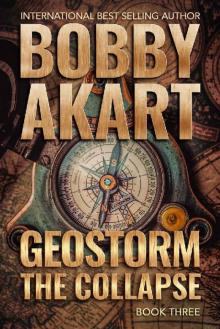 Geostorm The Collapse: A Post Apocalyptic EMP Survival Thriller (The Geostorm Series Book 3)
Geostorm The Collapse: A Post Apocalyptic EMP Survival Thriller (The Geostorm Series Book 3)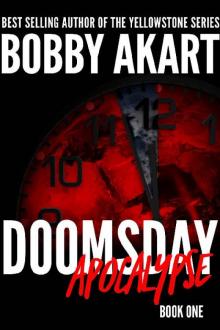 Doomsday Apocalypse
Doomsday Apocalypse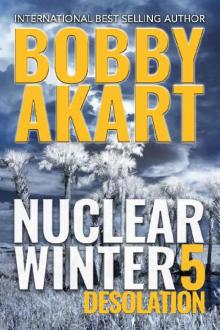 Nuclear Winter Desolation: Post Apocalyptic Survival Thriller (Nuclear Winter Series Book 5)
Nuclear Winter Desolation: Post Apocalyptic Survival Thriller (Nuclear Winter Series Book 5)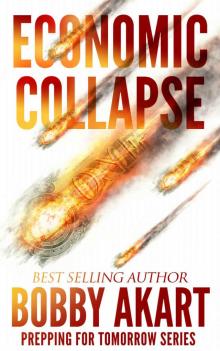 Economic Collapse (Prepping for Tomorrow Book 2)
Economic Collapse (Prepping for Tomorrow Book 2)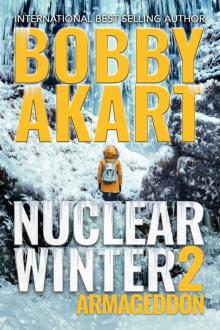 Nuclear Winter Armageddon
Nuclear Winter Armageddon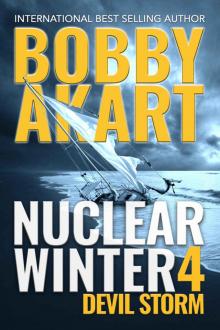 Nuclear Winter Devil Storm
Nuclear Winter Devil Storm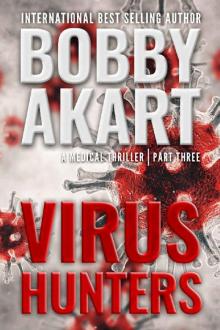 Virus Hunters 3: A Medical Thriller
Virus Hunters 3: A Medical Thriller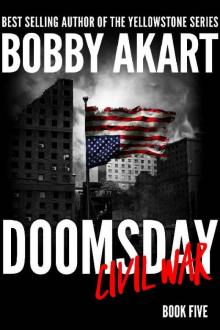 Doomsday Civil War: A Post-Apocalyptic Survival Thriller (The Doomsday Series Book 5)
Doomsday Civil War: A Post-Apocalyptic Survival Thriller (The Doomsday Series Book 5)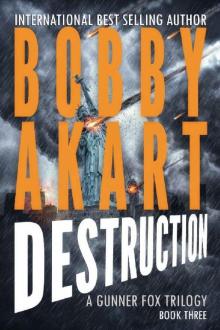 Asteroid Destruction
Asteroid Destruction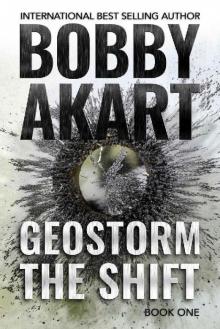 Geostorm the Shift
Geostorm the Shift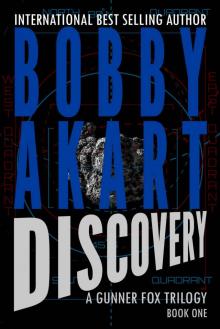 Asteroid Discovery
Asteroid Discovery Virus Hunters 2: A Medical Thriller
Virus Hunters 2: A Medical Thriller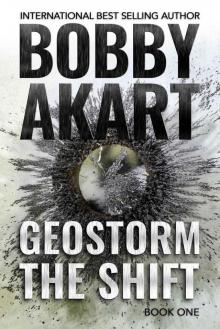 Geostorm The Shift: A Post-Apocalyptic EMP Survival Thriller (The Geostorm Series Book 1)
Geostorm The Shift: A Post-Apocalyptic EMP Survival Thriller (The Geostorm Series Book 1) Asteroid Diversion
Asteroid Diversion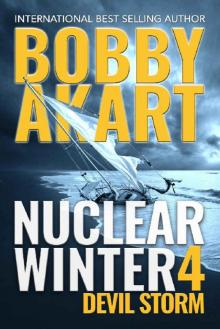 Nuclear Winter Devil Storm: Post Apocalyptic Survival Thriller (Nuclear Winter Series Book 4)
Nuclear Winter Devil Storm: Post Apocalyptic Survival Thriller (Nuclear Winter Series Book 4)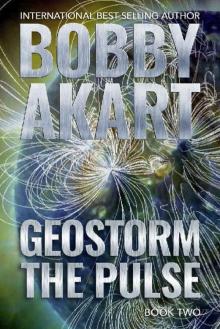 Geostorm The Pulse: A Post Apocalyptic EMP Survival Thriller (The Geostorm Series Book 2)
Geostorm The Pulse: A Post Apocalyptic EMP Survival Thriller (The Geostorm Series Book 2)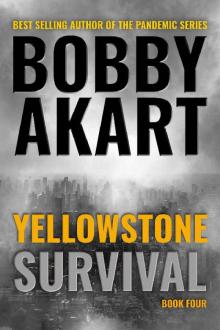 Yellowstone: Survival: A Post-Apocalyptic Survival Thriller (The Yellowstone Series Book 4)
Yellowstone: Survival: A Post-Apocalyptic Survival Thriller (The Yellowstone Series Book 4)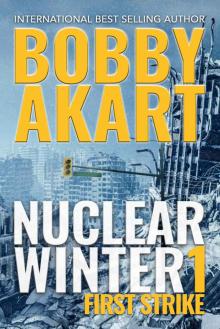 Nuclear Winter First Strike: Post-Apocalyptic Survival Thriller
Nuclear Winter First Strike: Post-Apocalyptic Survival Thriller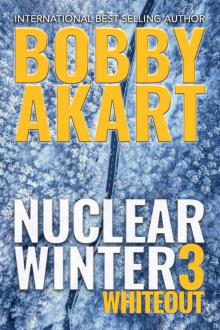 Nuclear Winter Whiteout
Nuclear Winter Whiteout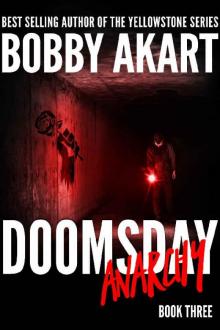 Doomsday Anarchy
Doomsday Anarchy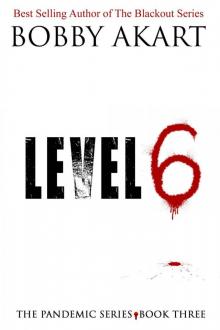 Pandemic: Level 6: A Post Apocalyptic Medical Thriller Fiction Series (The Pandemic Series Book 3)
Pandemic: Level 6: A Post Apocalyptic Medical Thriller Fiction Series (The Pandemic Series Book 3)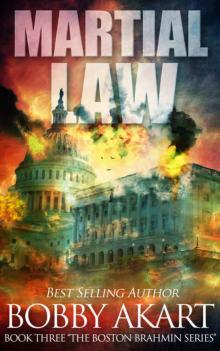 Martial Law
Martial Law Odessa Reborn: A Terrorism Thriller (Gunner Fox Book 4)
Odessa Reborn: A Terrorism Thriller (Gunner Fox Book 4)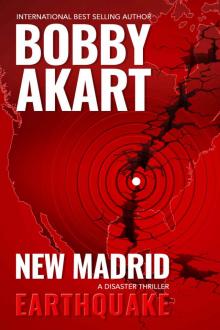 New Madrid Earthquake
New Madrid Earthquake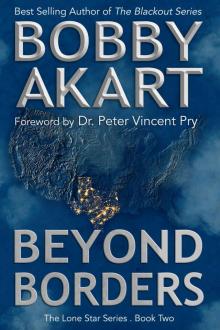 Beyond Borders: Post Apocalyptic EMP Survival Fiction (The Lone Star Series Book 2)
Beyond Borders: Post Apocalyptic EMP Survival Fiction (The Lone Star Series Book 2)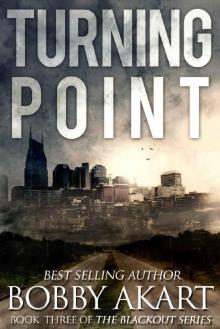 The Blackout Series (Book 3): Turning Point
The Blackout Series (Book 3): Turning Point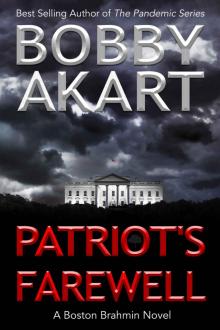 Patriot's Farewell: A Political Thriller Fiction Series (Boston Brahmin Political Thrillers Book 7)
Patriot's Farewell: A Political Thriller Fiction Series (Boston Brahmin Political Thrillers Book 7)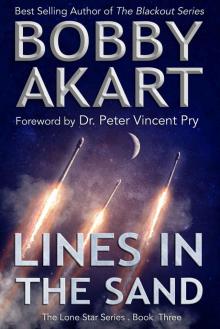 Lines in the Sand_Post Apocalyptic EMP Survival Fiction
Lines in the Sand_Post Apocalyptic EMP Survival Fiction The Mechanics: A Post-Apocalyptic Fiction Series
The Mechanics: A Post-Apocalyptic Fiction Series The Loyal Nine
The Loyal Nine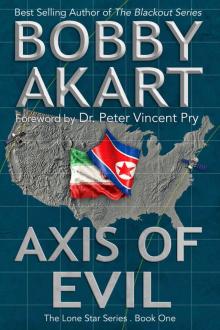 Axis of Evil
Axis of Evil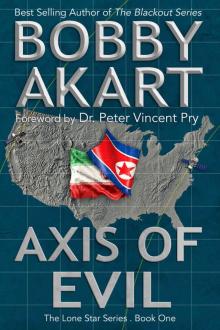 Axis of Evil: Post Apocalyptic EMP Survival Fiction (The Lone Star Series Book 1)
Axis of Evil: Post Apocalyptic EMP Survival Fiction (The Lone Star Series Book 1)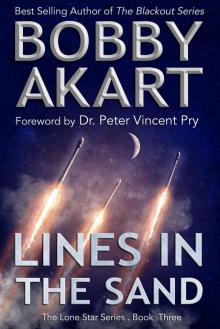 Lines in the Sand: Post Apocalyptic EMP Survival Fiction (The Lone Star Series Book 3)
Lines in the Sand: Post Apocalyptic EMP Survival Fiction (The Lone Star Series Book 3)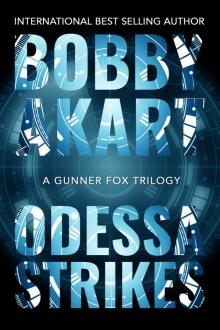 Odessa Strikes
Odessa Strikes The Blackout Series (Book 4): Shiloh Ranch
The Blackout Series (Book 4): Shiloh Ranch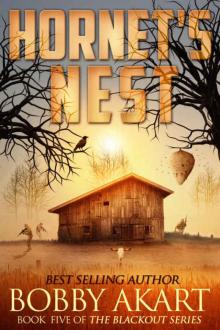 Hornet's Nest: A Post Apocalyptic EMP Survival Fiction Series (The Blackout Series Book 5)
Hornet's Nest: A Post Apocalyptic EMP Survival Fiction Series (The Blackout Series Book 5)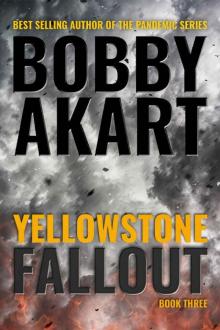 Yellowstone: Fallout: A Post-Apocalyptic Survival Thriller (The Yellowstone Series Book 3)
Yellowstone: Fallout: A Post-Apocalyptic Survival Thriller (The Yellowstone Series Book 3)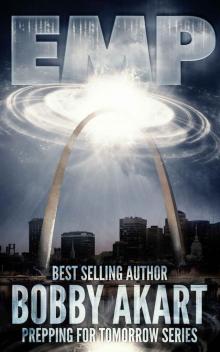 Electromagnetic Pulse
Electromagnetic Pulse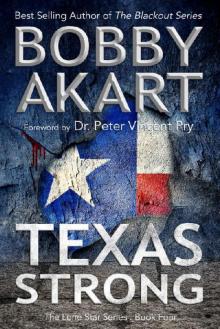 Texas Strong: Post Apocalyptic EMP Survival Fiction (The Lone Star Series Book 4)
Texas Strong: Post Apocalyptic EMP Survival Fiction (The Lone Star Series Book 4)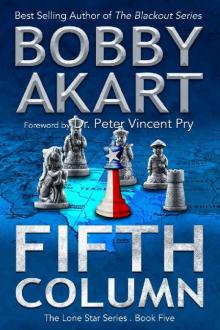 Fifth Column_Post Apocalyptic EMP Survival Fiction
Fifth Column_Post Apocalyptic EMP Survival Fiction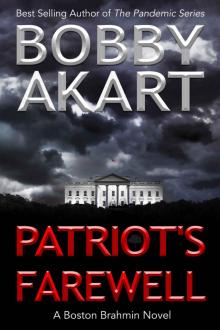 Patriot's Farewell
Patriot's Farewell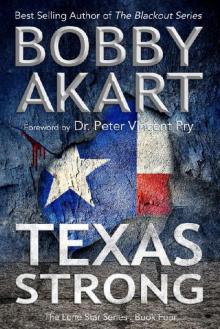 Texas Strong_Post Apocalyptic EMP Survival Fiction
Texas Strong_Post Apocalyptic EMP Survival Fiction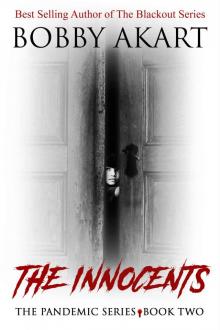 Pandemic: The Innocents: A Post-Apocalyptic Medical Thriller Fiction Series (The Pandemic Series Book 2)
Pandemic: The Innocents: A Post-Apocalyptic Medical Thriller Fiction Series (The Pandemic Series Book 2) Shiloh Ranch: A Post Apocalyptic EMP Survival Fiction Series (The Blackout Series Book 4)
Shiloh Ranch: A Post Apocalyptic EMP Survival Fiction Series (The Blackout Series Book 4)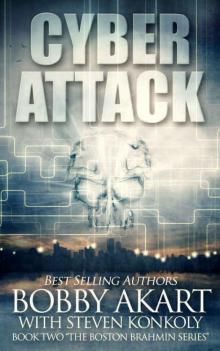 Cyber Attack
Cyber Attack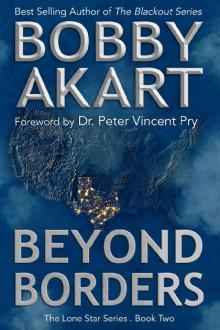 Beyond Borders
Beyond Borders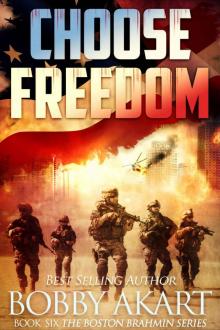 Choose Freedom: A Post-Apocalyptic Fiction Series (The Boston Brahmin Book 6)
Choose Freedom: A Post-Apocalyptic Fiction Series (The Boston Brahmin Book 6)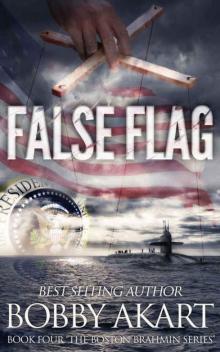 False Flag
False Flag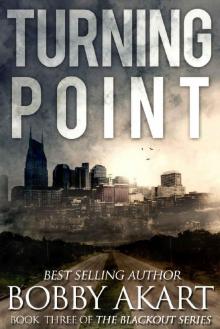 Turning Point: A Post Apocalyptic EMP Survival Fiction Series (The Blackout Series Book 3)
Turning Point: A Post Apocalyptic EMP Survival Fiction Series (The Blackout Series Book 3)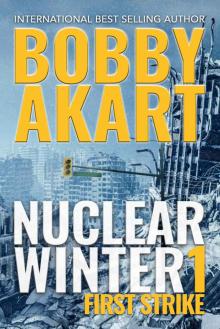 Nuclear Winter First Strike
Nuclear Winter First Strike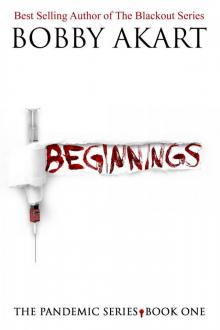 Pandemic: Beginnings: A Post-Apocalyptic Medical Thriller Fiction Series (The Pandemic Series Book 1)
Pandemic: Beginnings: A Post-Apocalyptic Medical Thriller Fiction Series (The Pandemic Series Book 1) Devil's Homecoming: A Post Apocalyptic EMP Survival Fiction Series (The Blackout Series Book 6)
Devil's Homecoming: A Post Apocalyptic EMP Survival Fiction Series (The Blackout Series Book 6) The Blackout Series (Book 6): Devil's Homecoming
The Blackout Series (Book 6): Devil's Homecoming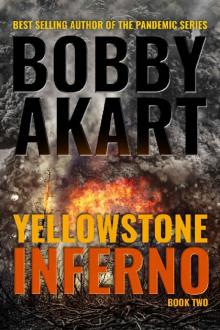 Yellowstone: Inferno: A Post-Apocalyptic Survival Thriller (The Yellowstone Series Book 2)
Yellowstone: Inferno: A Post-Apocalyptic Survival Thriller (The Yellowstone Series Book 2)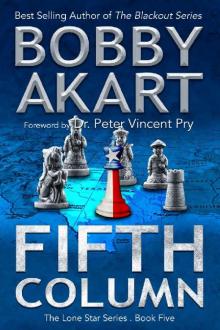 Fifth Column: Post Apocalyptic EMP Survival Fiction (The Lone Star Series Book 5)
Fifth Column: Post Apocalyptic EMP Survival Fiction (The Lone Star Series Book 5)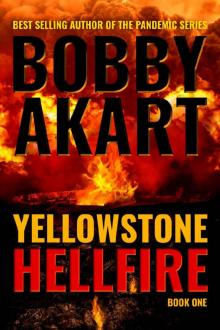 Yellowstone: Hellfire: A Post-Apocalyptic Survival Thriller (The Yellowstone Series Book 1)
Yellowstone: Hellfire: A Post-Apocalyptic Survival Thriller (The Yellowstone Series Book 1)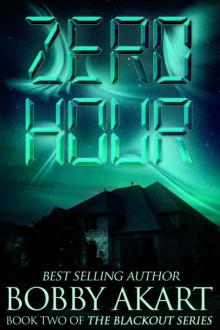 The Blackout Series (Book 2): Zero Hour
The Blackout Series (Book 2): Zero Hour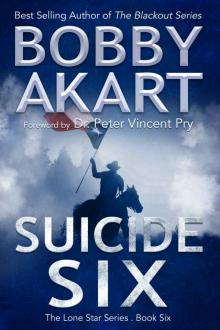 Suicide Six: Post Apocalyptic EMP Survival Fiction (The Lone Star Series Book 6)
Suicide Six: Post Apocalyptic EMP Survival Fiction (The Lone Star Series Book 6)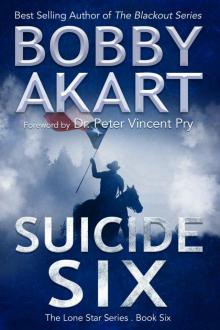 Suicide Six_Post Apocalyptic EMP Survival Fiction
Suicide Six_Post Apocalyptic EMP Survival Fiction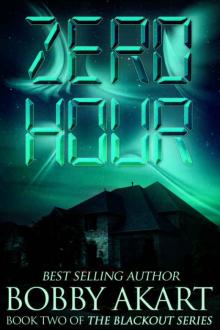 Zero Hour: A Post-Apocalyptic EMP Survival Fiction Series (The Blackout Series Book 2)
Zero Hour: A Post-Apocalyptic EMP Survival Fiction Series (The Blackout Series Book 2)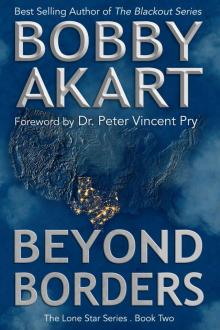 Beyond Borders_Post Apocalyptic EMP Survival Fiction
Beyond Borders_Post Apocalyptic EMP Survival Fiction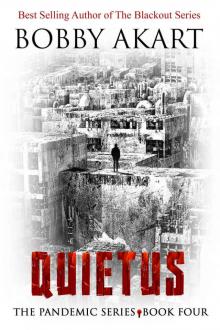 Pandemic: Quietus: A Post-Apocalyptic Dystopian Fiction Series (The Pandemic Series Book 4)
Pandemic: Quietus: A Post-Apocalyptic Dystopian Fiction Series (The Pandemic Series Book 4)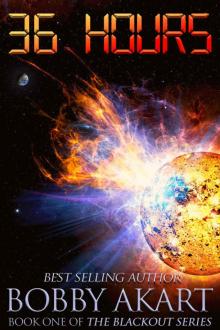 36 Hours: A Post-Apocalyptic EMP Survival Fiction Series
36 Hours: A Post-Apocalyptic EMP Survival Fiction Series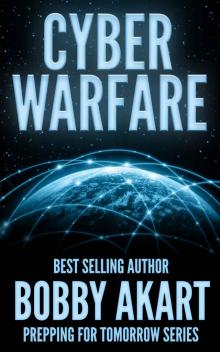 Cyber Warfare
Cyber Warfare